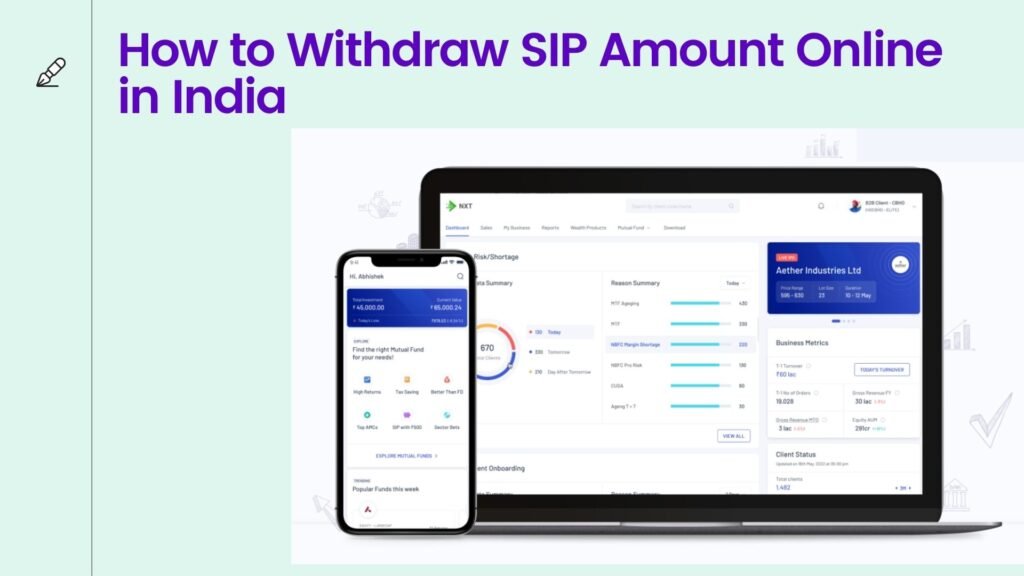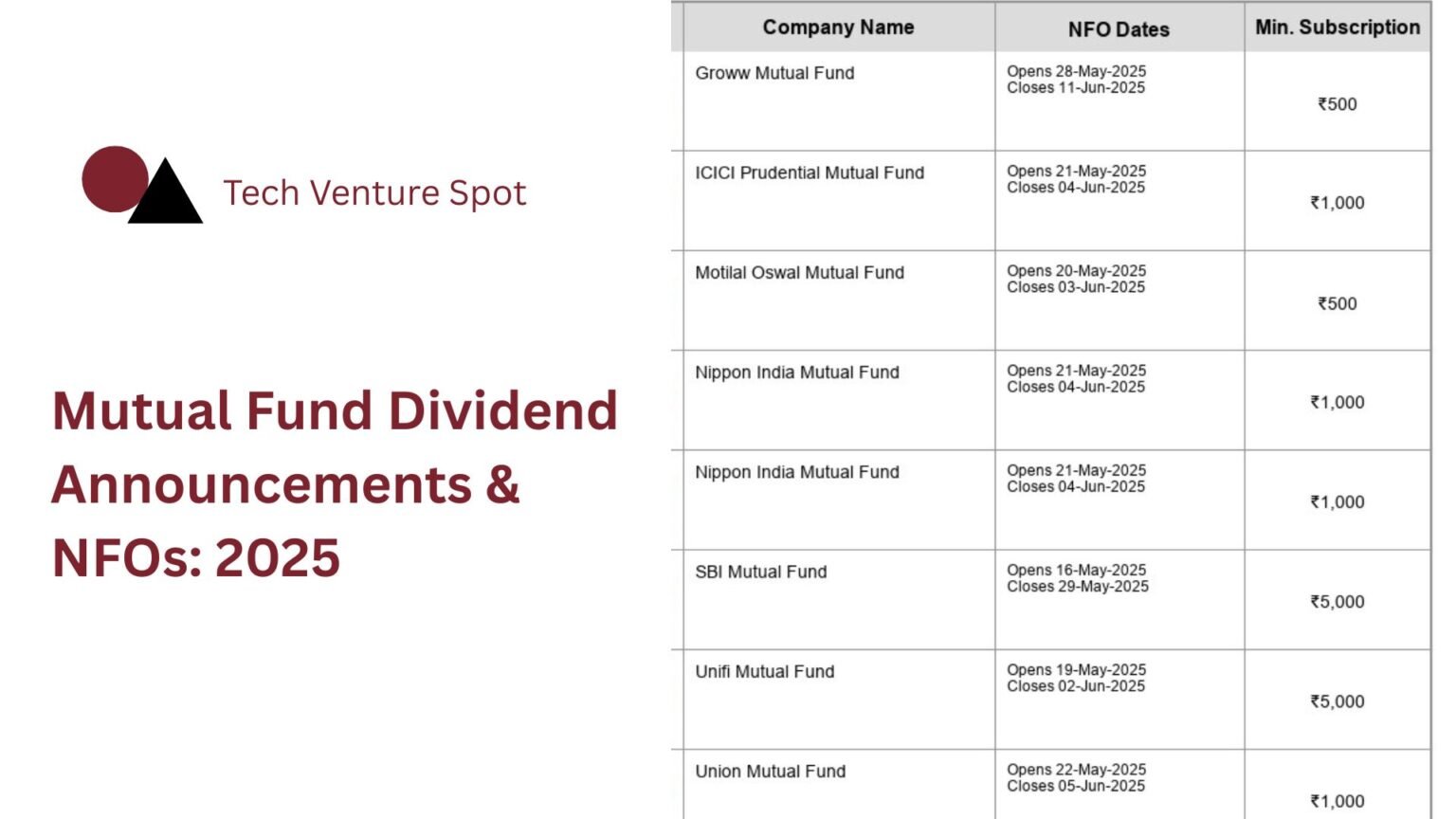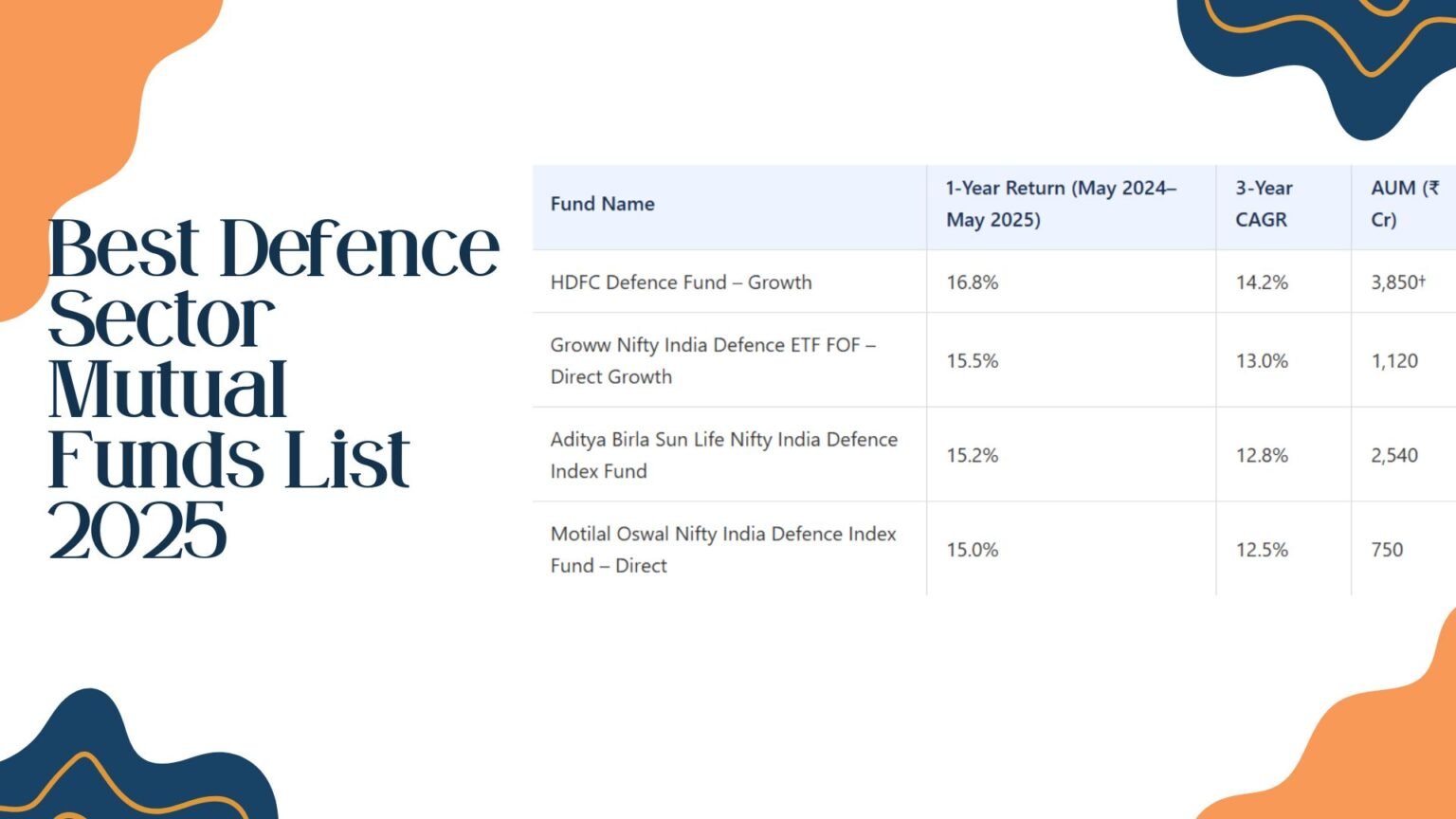
How to Withdraw SIP Amount Online in India (as of June 14, 2025)
This how-to is a detailed examination of withdrawing your Systematic Investment Plan (SIP) amount online. It includes a step-by-step process, important factors to note, and a comprehensive list of platforms to ensure you are well-informed.
Learn the Basics of SIP and Withdrawal
A Systematic Investment Plan (SIP) is a method of investing in mutual funds where an investor contributes a fixed sum at regular intervals (e.g., monthly). This approach leverages rupee cost averaging and the power of compounding to build wealth over time.
However, circumstances may require an investor to withdraw their SIP investments, whether for emergencies, achieving financial goals, or rebalancing an investment strategy. Online withdrawal has become increasingly streamlined across various platforms.
Withdrawal is done by redeeming units of a mutual fund. This can be initiated through the online portals of a broker, an Asset Management Company (AMC), or a Registrar and Transfer Agent (RTA). While the process is generally straightforward, investors must be aware of lock-in periods, exit loads, and tax implications to avoid unexpected costs.
Detailed Step-by-Step Process for Online Withdrawal
Log in to Your Investment Account
Open your trading/demat account or log in directly to the website/app of the mutual fund house or broker.
You will need your login credentials, which could be:
- PAN and password
- Folio number and password
- Registered username/email and password
After logging in, navigate to the "Mutual Fund Holdings" or "Portfolio" section.
Choose the Withdrawal Scheme
From your list of investments, select the specific mutual fund scheme (e.g., equity, debt, hybrid) from which you wish to withdraw money.
Look for options labeled:
- “Redeem”
- “Withdraw”
- “Systematic Withdrawal Plan (SWP)”
Always double-check that you have selected the correct SIP plan before proceeding.
Input Withdrawal Information
You will be prompted to specify either:
- The amount you wish to withdraw (in Rupees), or
- The number of units you wish to redeem.
If you need regular periodic payouts, consider setting up a Systematic Withdrawal Plan (SWP) instead of a one-time redemption.
Confirm the Transaction
Before final submission, carefully review all the details:
- The scheme name.
- The withdrawal amount or number of units.
- The linked bank account where the funds will be credited.
You will likely need to complete a final authentication step, typically by entering an OTP sent to your registered mobile number or email address. This secures the transaction and initiates the redemption process.
Wait for Fund Crediting
The redemption amount is typically credited to your linked bank account within 2-3 working days. The exact timeline depends on the fund type (equity funds may take longer than liquid funds).
If you don't receive the credit within the expected timeframe:
- Check the FAQ section of your platform. (e.g., 5paisa states a minimum reflection time of 2 days).
- Contact your bank to check for any processing delays or holds.
Important Factors to Note Before Withdrawing
Some mutual fund schemes have a mandatory lock-in period during which you cannot withdraw your investment. Premature withdrawal is not permitted.
- Equity-Linked Savings Schemes (ELSS): These have a compulsory lock-in of 3 years from the date of investment for each SIP installment.
- Other Solution-Oriented Funds: Schemes like children's savings plans may have a lock-in of 5 years or until the child reaches the age of majority.
An exit load is a fee charged by the AMC if you redeem your units within a specified period from the investment date. This is typically a percentage (0.5% to 2%) of the redeemed amount and is deducted from the NAV.
The purpose is to discourage short-term trading. This charge can reduce your net returns, especially on premature withdrawals.
Withdrawals are subject to Capital Gains Tax, which depends on the holding period and the type of fund.
For Equity-Oriented Funds:
- Short-Term Capital Gains (STCG): If held for 12 months or less, gains are taxed at a flat rate of 15%.
- Long-Term Capital Gains (LTCG): If held for more than 12 months, gains up to ₹1 lakh per financial year are tax-exempt. Gains above this limit are taxed at 10%.
For Debt Mutual Funds:
- Short-Term Capital Gains (STCG): If held for 36 months or less, gains are added to your annual income and taxed at your applicable income tax slab rate.
- Long-Term Capital Gains (LTCG): If held for more than 36 months, gains are taxed at 20% after indexation benefits.
Tax Implications at a Glance
The holding period significantly impacts your tax liability. The chart below illustrates the different tax rates for equity funds.
SIP Investment & Withdrawal Platforms
Explore top platforms for Systematic Investment Plans (SIPs) and withdrawals. Compare features, access direct links, and learn how to start your investment journey.
Understanding SIPs
A Systematic Investment Plan (SIP) is an investment strategy offered by mutual funds where investors contribute a fixed amount regularly. This approach leverages compounding and rupee-cost averaging to build wealth over time.
Top SIP Platforms
Compare features, withdrawal processes, and investment options across leading platforms:
Easy-to-use interface with detailed guides and calculators for SIP planning.
- Detailed investment guides
- SIP calculators
- Low minimum investment
Comprehensive knowledge center with calculators and direct withdrawal options.
- Extensive research tools
- Direct withdrawal
- Portfolio tracking
User-friendly app with SWP calculator and direct mutual fund investments.
- SIP from ₹500
- SWP calculator
- Beginner friendly
Wide range of mutual funds with easy redemption process and investment tools.
- Extensive fund selection
- Easy redemption
- Financial planning tools
Direct access to SIP investments and withdrawals through their official website.
- Direct AMC access
- Online transactions
- Fund performance data
Simple platform for investing and withdrawing SIPs with clear instructions.
- Simplified interface
- Clear instructions
- Quick transactions
SIP Growth Comparison
Platform Popularity
Starting Your SIP Investment
To initiate a SIP, investors typically follow these steps:
Choose a mutual fund scheme based on financial goals, risk tolerance, and investment horizon.
Determine investment amount and frequency (monthly, quarterly). Platforms like Groww allow SIPs starting from ₹500.
Set up SIP on your chosen platform or directly with the AMC (Asset Management Company).
Connect bank account for automatic debits to ensure smooth transactions.
Note: SIP investments leverage the power of compounding. Regular investments over a long period can significantly grow your corpus before redemption.
SIP vs Lump Sum Investment
Understanding different investment approaches:
| Feature | SIP Investment | Lump Sum Investment |
|---|---|---|
| Investment Approach | Regular fixed amounts | One-time large amount |
| Risk Management | Rupee-cost averaging reduces risk | Higher market timing risk |
| Minimum Amount | As low as ₹500/month | Usually higher minimums |
| Suitable For | Regular income earners | Those with large capital |
| Market Timing | Not critical | Critical for success |
Power of Compounding in SIPs
Note: This information is for educational purposes only. Consult a financial advisor before making investment decisions.
Data sources: AMFI, SEBI, Respective platform websites | Updated: June 2025





